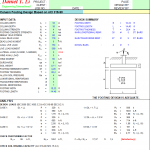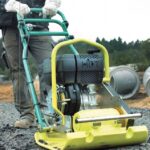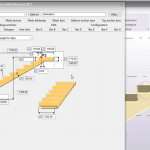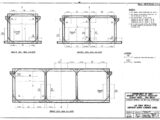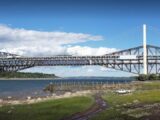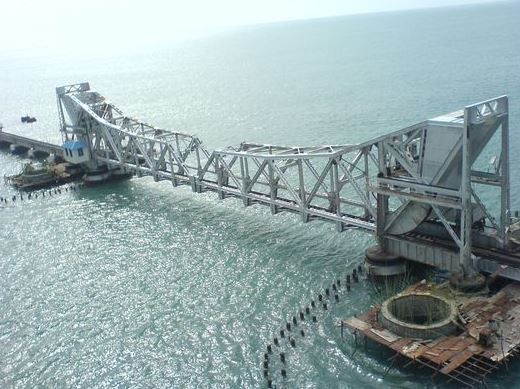
What Is Cantilever Bridge? Types Of Cantilever Bridges. Advantages and Disadvantages
12 December 2021Table of Contents
What Is Cantilever Bridge? Types Of Cantilever Bridges. Advantages and Disadvantages
Introduction
A cantilever bridge is a bridge whose main structures are cantilevers, which are used to build girder bridges and truss bridges. A cantilever bridge has advantages in both simply supported and continuous bridges, like they are suitable for foundation with uneven settlement; they can be built
without false-works but has larger span capacity.
For cantilever bridges with balanced construction, hinges are usually provided at contra-flexure points of a continuous span, and an intermediate simply supported span can be suspended between two hinges. Cantilever bridges were not only built as girder bridges but also widely used in truss bridges.
Cantilever bridges are widely seen in major cities and movies. Though you have seen them but might not know the name it is called.
A cantilever is a structure with one of its ends fixed and free at other ends. The other end projects horizontally into space, and it is this end that helps support the bridge.
A cantilever bridge works in such a way that the bottom part of each cantilever is fixed or anchored into the ground, while the upper end of the cantilever supports the bridge itself.
The Cantilever bridge is a widely constructed bridge all over the world. These bridges are widely adopted mainly because They do not need any support. Usually, cantilever bridges are built when providing many supports is not possible.
Type Of Cantilever Bridges
The cantilever bridges are mainly divided into two types:
- Balance Cantilever Bridges
- Continuous Cantilever Bridges
1.Balanced Cantilever Bridges
The Balanced Cantilever Bridge does not require any falsework. Usually, this type of bridge is opted for constructing a long-span bridge.
If the bridge construction requirement is not suitable for simply supported or continuous frame type structures, then balanced cantilever bridges can be used.
We know that constructing a long-span continuous or simply supported bridge requires a solid foundation, which would be more expensive to construct.
Generally, balanced cantilever bridges are the combination of both simply supported structure and continuous structure.
The cantilever structure, which is constructed with only one cantilever length, must be small; otherwise, there may be chances of uplift at another end.
Cantilever balance Bridge has advantages of both continuous and simply supported structures. Like continuous bridges, The cantilever balance Bridge needs one line of bearings over the piers.
2.Continuous Cantilever Bridges
The continuous cantilever bridge is a truss bridge that extends across three or more supports without hinges or joints. Cantilever bridges are highly simplified, but they will explain the basic concepts of a conventional beam.
The abutments should be made heavy to compensate for the absence of a balanced cantilever. These types of Cantilever bridges work as continuous beam feet span between two support by maintaining their bending moment and Shear Strength throughout the beam.
Cantilever Bridge Advantages and Disadvantages
Advantages Cantilever Bridges
- Generally, the requirement of falsework is not much, other than the requirement for the pier.
- The suspended bridges sections are assembled that can only be elevated and attached between two cantilever spans.
- Only one side of each cantilever requires support.
- The floor of the bridge is simply formed into sections to preserve uniformity and ensure high quality.
- It is less time-consuming, As multiple cantilever spans construction can be started simultaneously from all its columns.
- Navigation or passage under the bridge is not disturbed during the construction process.
- There is no need for synthetic support if the area has a strong rock structure and anchor arms are connected to the surrounding rock.
- The span of cantilever bridges is usually longer than conventional beams since the cantilever is attached at the ends of the bridge.
- Cantilever bridges can withstand the effects of thermal expansion and floor speed than other types of bridges.
- In cantilever bridges, the lack of supporting piers provides extra flexibility to the styles and geometry of the highway supported by this bridge.
- These bridges are most suitable for flood-prone areas and deep rocky valleys, where falsework might be dangerous or difficult.
Disadvantages Of Cantilever Bridges
- Cantilever bridges cannot be constructed in extreme climate conditions due to the lack of multiple seasons.
- Cantilever bridges require advanced analysis to prevent future fatigue failure of elements and welds.
- Disability of the RC floor as part of a composite section.
- It is challenging to construct and maintain these bridges, as they are largescale structures.
- Requires bigger and stronger support columns to withstand the bridge load.
- Generally, Long span bridges have truss bridges between the two cantilevers to reduce their weight.
- Cantilever beams are not suitable for earthquake-prone areas or areas with low-rock stability.
- A cantilever bridge requires a heavier structure to take care of its own stability by creating stability between compressive and tensile forces.
- During the construction of Cantilever bridges, they experience a high level of tension which is known as negative moments.
Top 10 Longest Cantilever Bridges in the world

